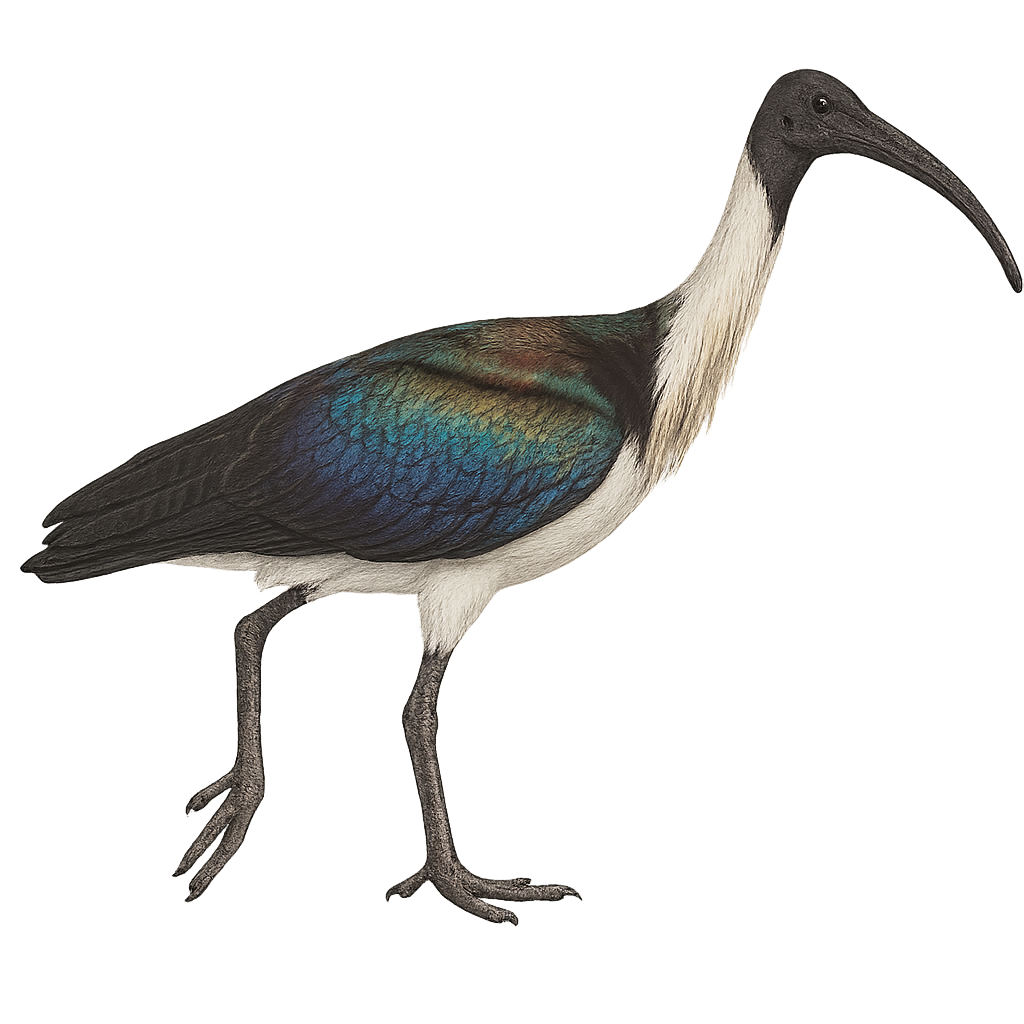Your wildlife photography guide.
Explore the australian ibis in detail, study its behavior, prepare your shots.
Where to observe and photograph the australian ibis in the wild
Learn where and when to spot the australian ibis in the wild, how to identify the species based on distinctive features, and what natural environments it inhabits. The WildlifePhotographer app offers tailored photography tips that reflect the australian ibis’s behavior, helping you capture better wildlife images. Explore the full species profile for key information including description, habitat, active periods, and approach techniques.
Australian Ibis
Scientific name: Threskiornis spinicollis

IUCN Status: Least Concern
Family: THRESKIORNITHIDAE
Group: Birds
Sensitivity to human approach: Suspicious
Minimum approach distance: 10 m
Courtship display: November to December
Incubation: 26-28 jours
Hatchings: November to January
Habitat:
Wetlands, flooded grasslands, marshes
Activity period :
Primarily active during the day, with peak activity in the morning and late afternoon.
Identification and description:
The Australian Ibis, or Threskiornis spinicollis, is a large wading bird easily recognized by its bare black head, long down-curved bill, and straw-colored feathers hanging from its breast. Its plumage is strikingly contrasted: the back and wings are bluish-black with iridescent reflections, while the neck, nape, and underparts are white. It inhabits wetlands, flooded meadows, and farmlands across Australia and New Guinea. It feeds on frogs, insects, small reptiles, and worms. Often seen in flocks, it breeds in colonies in trees near water. The species is widespread and well adapted to open environments.
Recommended lens:
400mm – adjust based on distance, desired framing (portrait or habitat), and approach conditions.
Photography tips:
To photograph the Australian Ibis, it is advisable to use a telephoto lens of at least 400mm to capture precise details without disturbing the bird. Look for wetlands or marshes where these ibises often gather. Be patient and discreet to observe their natural behavior. The best lighting is usually early in the morning or late in the afternoon when the light is soft and highlights the metallic sheen of their plumage. Use a tripod to stabilize your camera and achieve sharp images.
The WildlifePhotographer App is coming soon!
Be the first to explore the best nature spots, track rutting seasons, log your observations, and observe more wildlife.
Already 1 439 wildlife lovers subscribed worldwide

